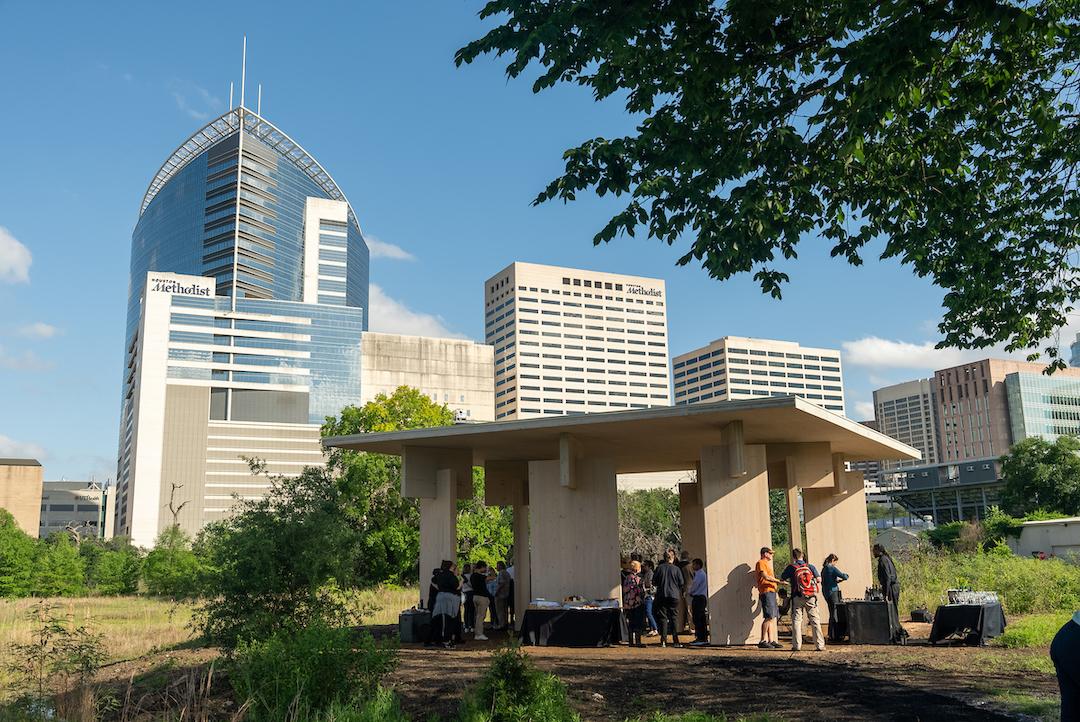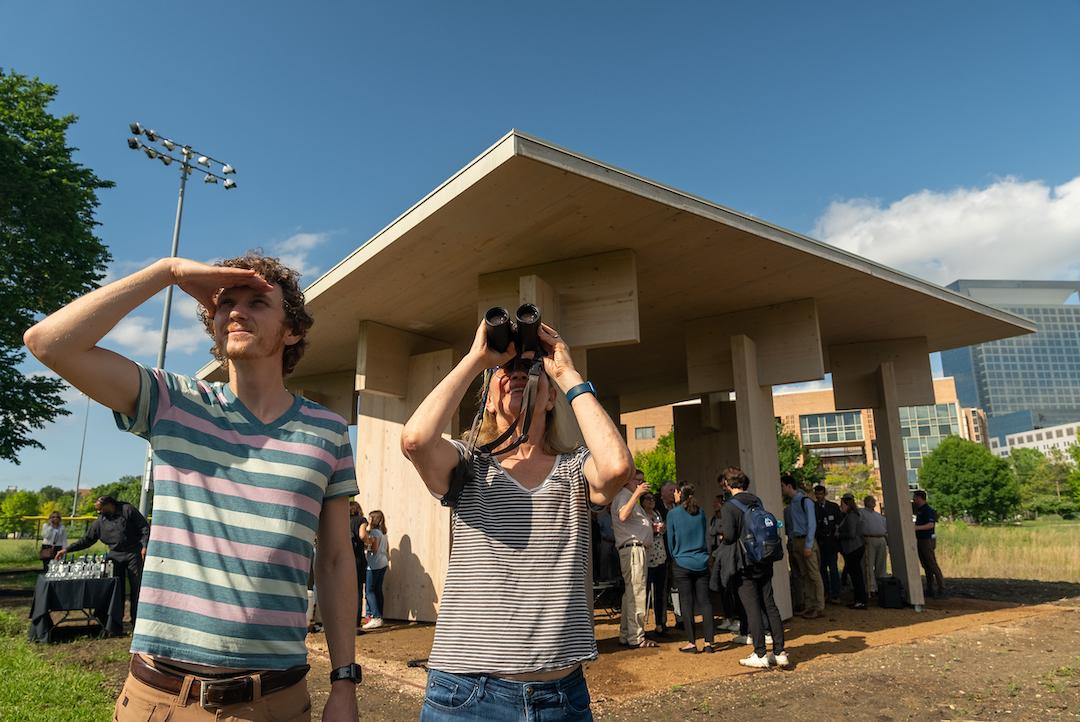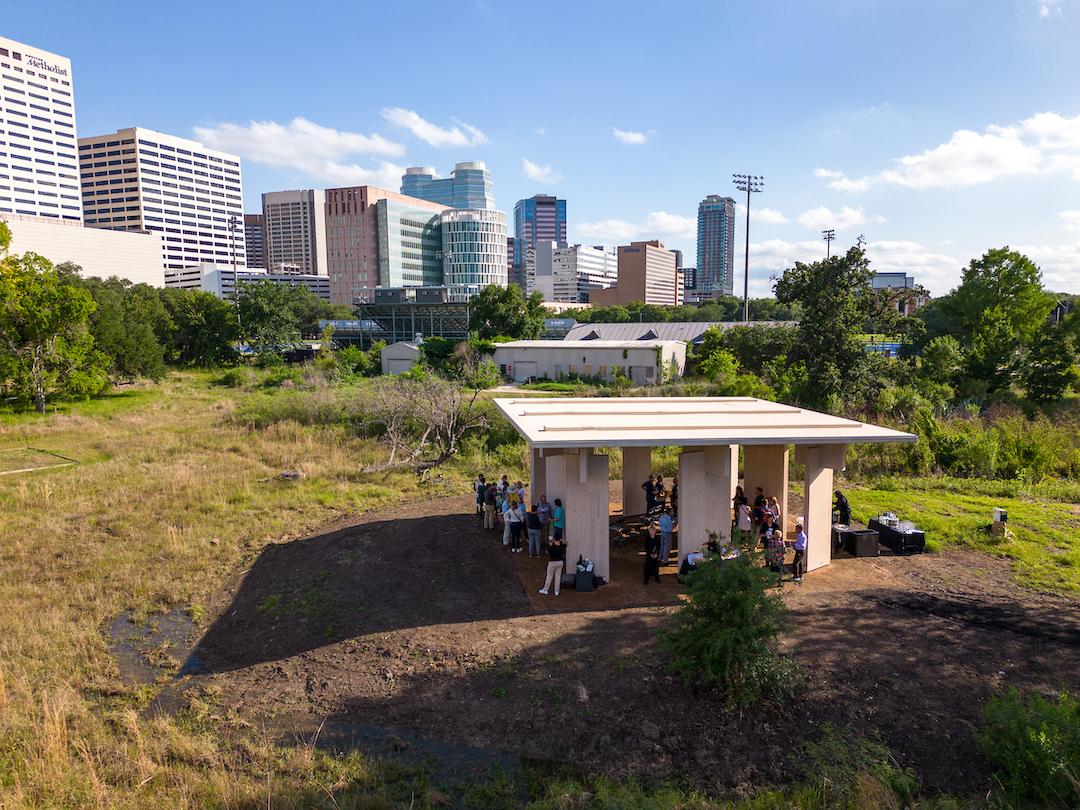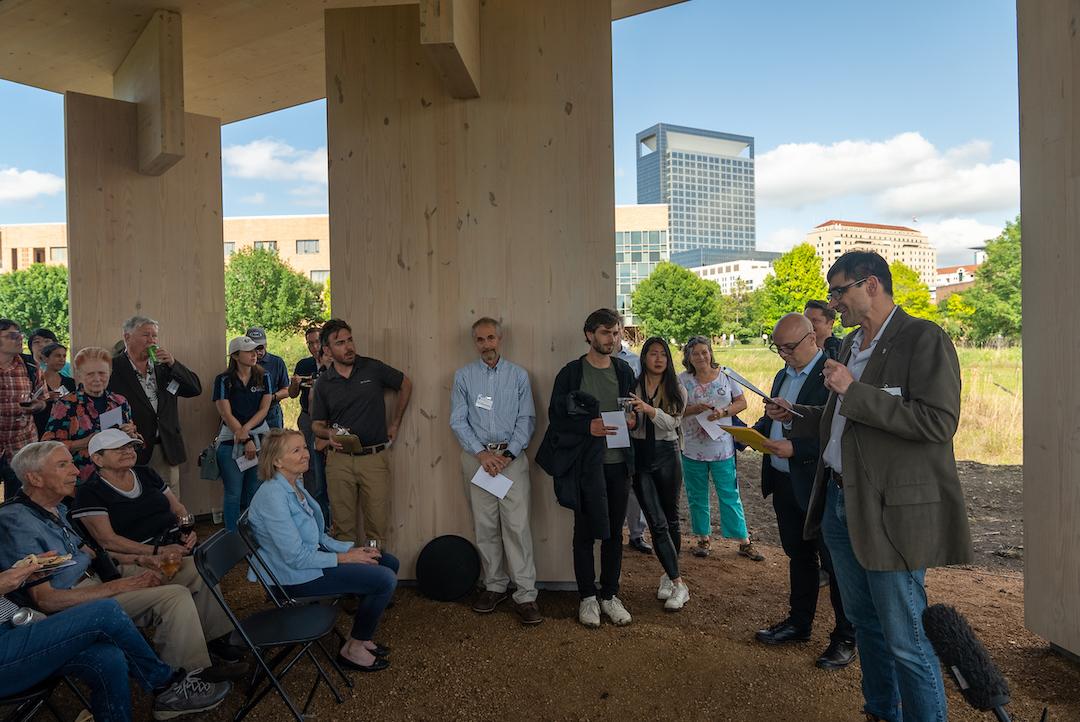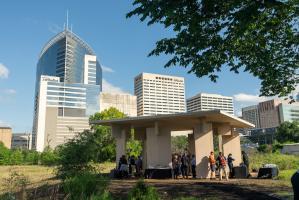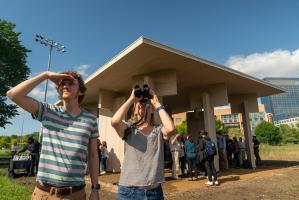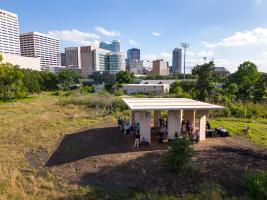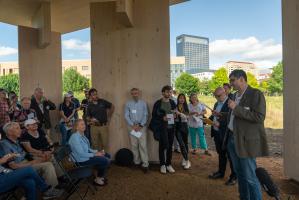The Johnson Owl Deck at Harris Gully was introduced to the Rice community during a grand opening and dedication on April 27.
The new wildlife observation pavilion, made of cross-laminated timber and located on one of the most biodiverse university campuses in the country, represents the first step in creating a world-class natural area while exemplifying the possibilities of a new sustainable construction method. The project was developed in Associate Professor Jesús Vassallo's wood seminar at Rice Architecture by a team formed by Rice alums Pouya Khadem and Lene Sollie in collaboration with structural engineer Tracy Huynh.
“The Johnson Owl Deck fuses not only the beauty of architectural and landscape design, but also ecology and the natural sciences,” said Igor Marjanović, the William Ward Watkin Dean of Rice Architecture. “It is a truly interdisciplinary exercise in design research, technological innovation and ecological stewardship.
“The fact that the pavilion originated in a class taught by Jesús Vassallo speaks to the practical agency of architecture to generate new forms of knowledge and bring people together. The area around the pavilion will be further enhanced later this year with the addition of landscape design by Assistant Professor Maggie Tsang, resulting in a beautiful integration of architecture and ecology — the city and nature.”
Students in Johnson's conservation biology lab have also played a large role in restoration efforts at the gully. Since 2015, the lab has studied the biodiversity of the site, leading to proposed restoration measures and an active research project.
“Through these activities, the students are learning how valuable urban conservation is to the protection of biodiversity and city ecosystem services,” Johnson said.
The gully consists of several microhabitats, from open prairie to open woodland to dense shrubland. Students and faculty have recorded over 250 species of birds on campus, as well as over 300 types of plants, more than 700 kinds of insects and five breeds of amphibians and reptiles.
Its biodiversity makes Harris Gully an ideal location to meditate or experience nature, including watching for birds.
“During migration, birds funnel into Harris Gully and they feed on the insects or the fruits — we now have a number of mulberry trees there and they come in and eat those,” Lee said. “A large community of people have been built around this and come to Rice to look for birds and other parts of nature fairly regularly.”
Drivers of the Johnson Owl Deck project hope the space continues to serve as an outdoor classroom and laboratory for students to learn about Earth, its environment and the life it harbors for years to come.
“The Owl Deck enables academic conversations and research while also providing a unique and peaceful setting for contemplation and connection with self and one's mental health,” said George Ristow, university architect and chair of the Arboretum Committee. “This project is undoubtedly a huge catalyst for the mission of the arboretum and it will enhance awareness and programming for a space that not every student knows about when they arrive on Rice’s campus for the first time.”


